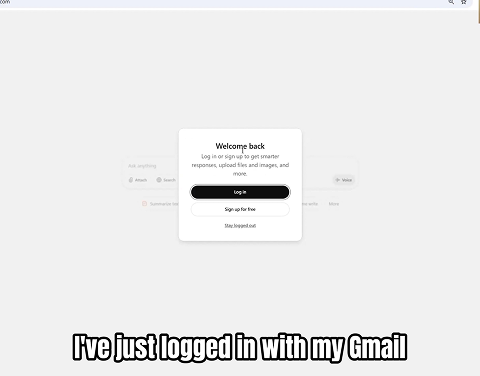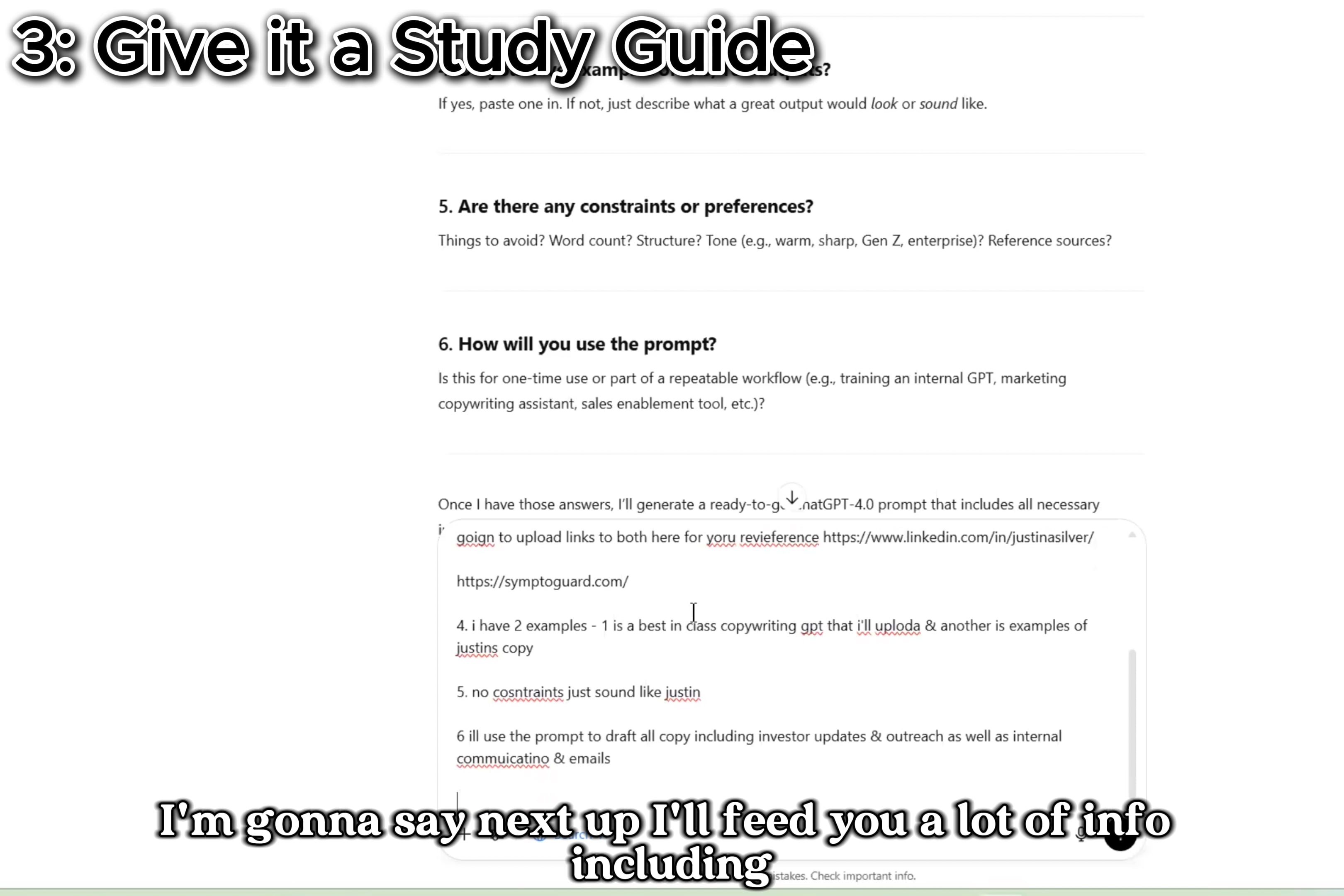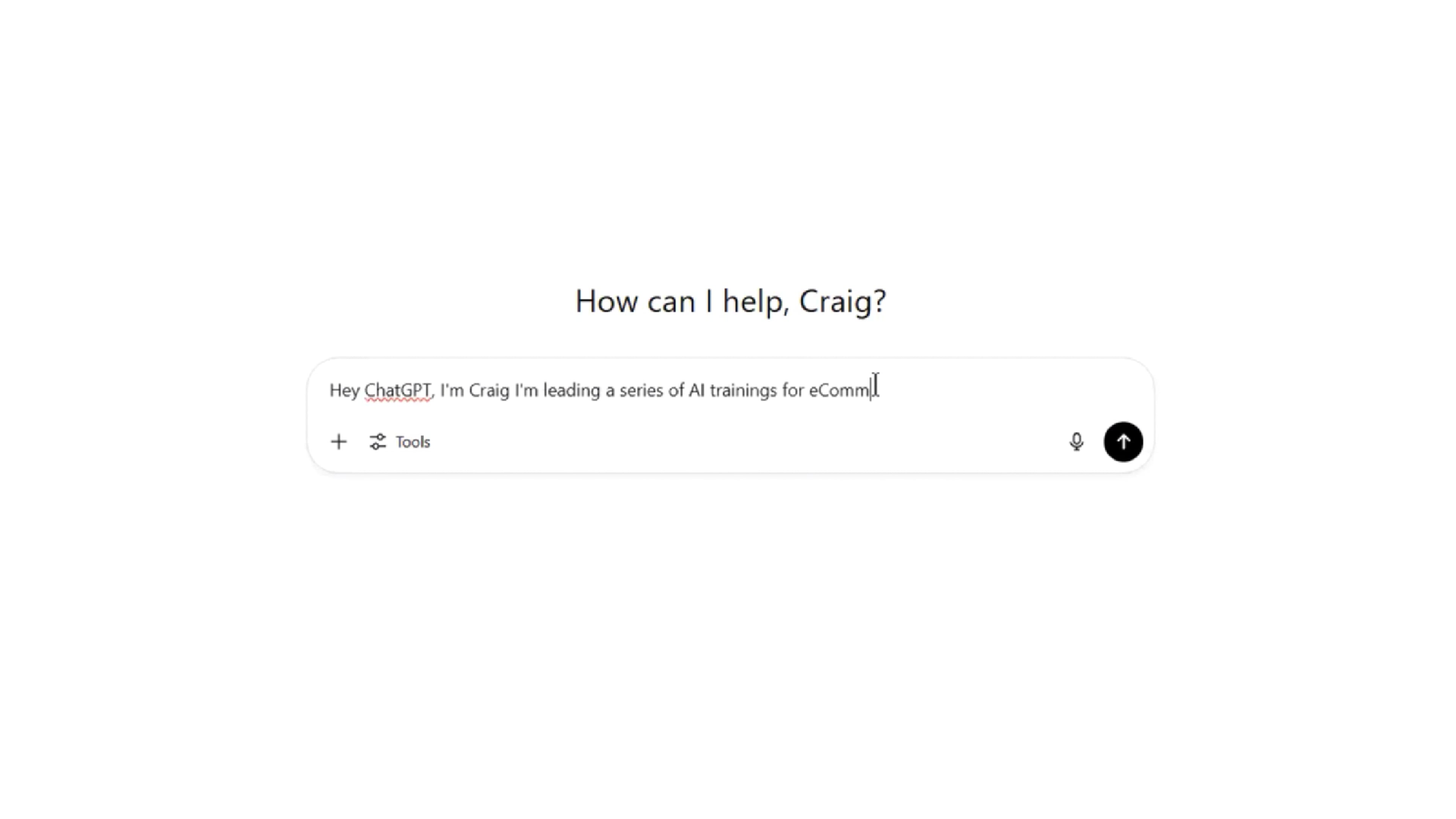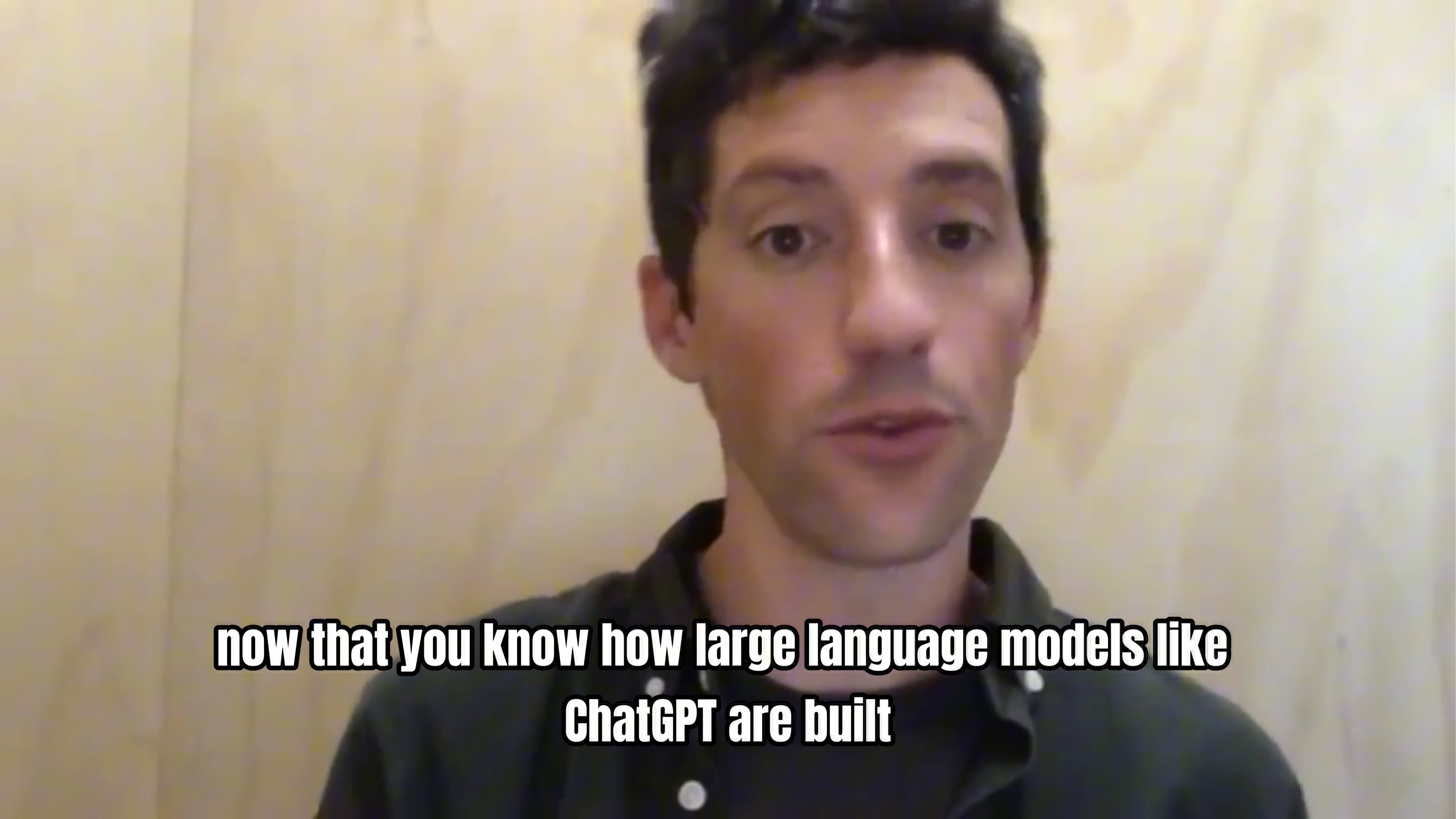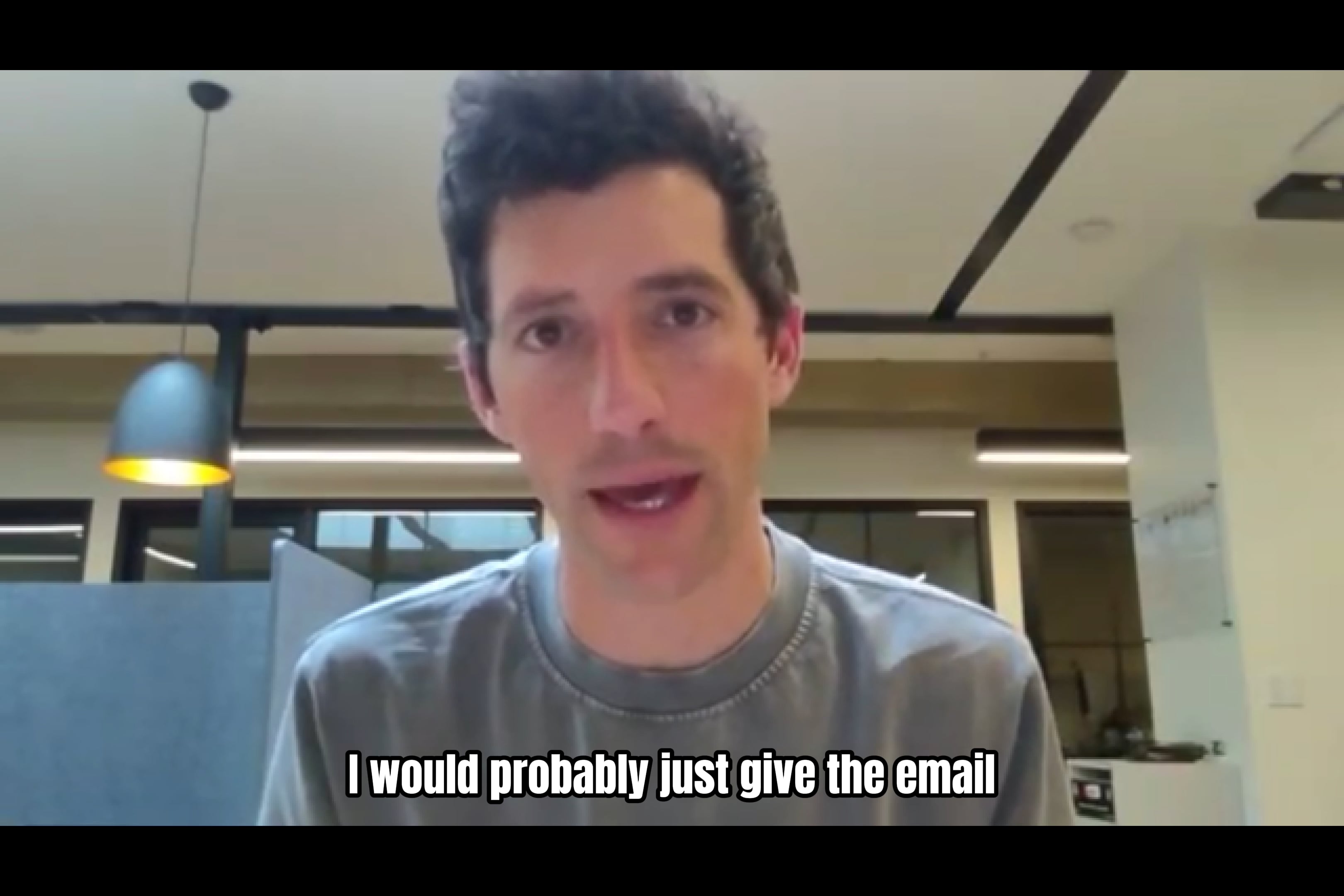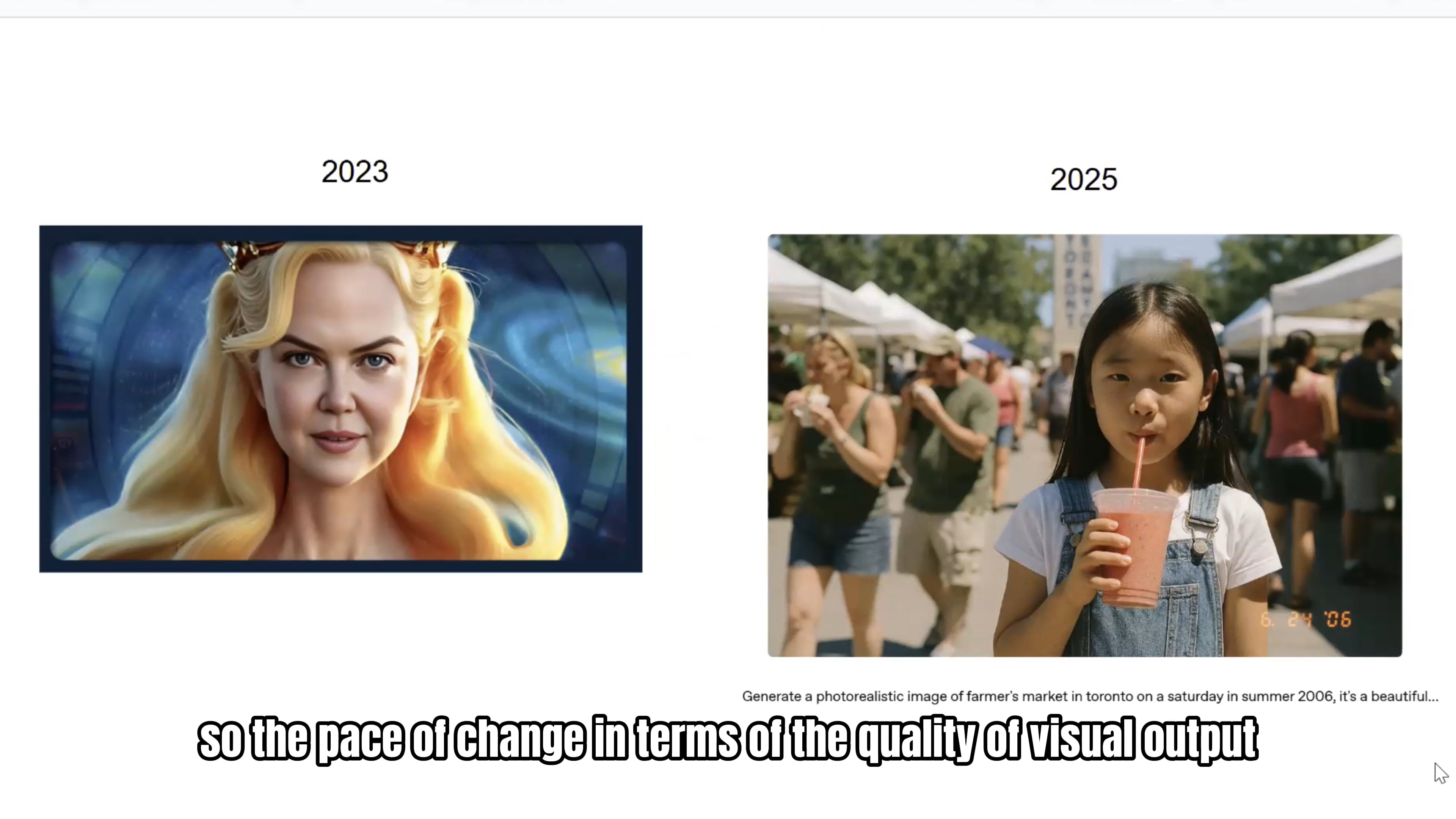Deep Research Mode: Fire-Up Your 24/7 Consultant-in-a-Box
The Winnie Lou Copy Sprint
Skip the Googlin. Skip the billable hours. ChatGPT’s Deep Research mode turns every leader or marketer into their own strategy partner - a 24/7 consultant that never sends an invoice.
In this module, you’ll watch us fire up Deep Research on a real brief and see how the tool:
- Triangulates market data, customer pain points, and competitor gaps in a single pass
- Surfaces Blue Ocean opportunities your team can act on tomorrow
- Packages the findings into a share-ready report - complete with charts, SWOT, and source citations - in under 30 minutes
You’ll Walk Away With:
🧠 A plug-and-play prompt that spins up Deep Research for any project
🔍 A repeatable workflow for asking clarifying questions, tightening scope, and steering the AI like a top-tier consultant
📊 A template report structure your exec team will actually read — roadmap, risk analysis, and go-to-market moves all in one deck
Why It Matters:
Because strategy shouldn’t bottleneck growth. When deep, defensible research is this fast, your team can pivot, launch, and out-learn the competition before their weekly stand-up even starts.
Click “Copy Prompt” and paste it into ChatGPT to to try it yourself.
You don’t have access on your current plan. Ask your team admin about upgrading.
Sample Deep Research Report
Executive Summary
- Booming Premium Opportunity: Pet owners are flocking to minimally processed “real food” diets – alternative formats like air-dried and fresh have surged >20% annually, dwarfing kibble’s ~3% growthpetfoodindustry.com. Premium pet food purchases rebounded strongly in 2024 (41% of dog owners, +5% YoY) as pet parents prioritize wellnessamericanpetproducts.org. Winnie Lou’s air-dried launch taps into this momentum with a nutrient-dense, human-grade offering.
- Unique Positioning: Winnie Lou stands out as an air-dried, whole-food dog food that delivers raw-like nutrition with kibble-like convenience. Unlike most “premium” kibbles (often extruded at high heat and fortified with vitamin packs), Winnie Lou is gently air-dried to retain nutrientspetfoodindustry.com and uses 0% synthetic supplements – all vitamins and minerals come from real ingredients (organ meats, kelp, etc.), aligning with holistic veterinary principlesblog.greenacreskennel.com. Novel proteins (venison, bison, etc.) provide an allergy-friendly, sustainable twist that competitors don’t offer at scale.
- Accessible Superpremium: While rivals like Farmer’s Dog or Sundays command $4/day feeding coststhequalityedit.comvetstreet.com, Winnie Lou hits a more accessible price point ($13/lb vs. $23–$30/lb for othersvetstreet.com) without compromising quality. This “affordable superpremium” positioning makes top-tier nutrition doable for more pet parentspetfoodindustry.com, a key edge as 1 in 6 owners recently traded down due to rising prices. The 2.25 lb trial bag at $32 (50% off promo) lowers the barrier for first-time trial.
- Go-to-Market Blueprint: Launching nationwide at Whole Foods (Oct ’25) provides an immediate trust signal and discovery platform in the natural channel. A phased rollout follows: DTC subscription (website) and community-driven indie pet stores in core markets, then broader e-commerce (Amazon/Chewy after 6 months). With a $500K/6mo budget, the plan prioritizes high-ROI tactics – in-store demos, targeted digital ads, and influencer advocacy – concentrated in five hip, health-conscious regions (Denver/Boulder, NYC, Austin/Dallas, LA/SoCal).
- Primary Target – “Caroline”: Ingredient-obsessed millennials like Caroline are the bullseye. They scrutinize labels and value mission-driven brands; Winnie Lou’s 100% human-grade recipes and ethical sourcing (novel proteins, no factory farming) speak to these valuespetfoodprocessing.netpetfoodprocessing.net. Messaging will emphasize transparency (“every ingredient has a purpose”), proven health benefits (fresh food diets can add ~2.5 healthy years to a dog’s lifehoundsy.com), and sustainability – converting Caroline’s intense research into emotional trust and trial.
- Secondary Target – “Wendy”: Empty-nest Boomers like Wendy seek simplicity and community. We’ll highlight convenience (“just scoop and serve – no thawing, no mess”) and offer personal touches (handwritten thank-yous, local dog meetup events) to make her feel part of the Winnie Lou family. Education and vet endorsements will reassure her that this is a science-backed choice, not a “fad diet”dvm360.com.
- High-Level Plan: Drive awareness pre-launch via localized social media buzz and pet influencer partnerships; stimulate trial through on-shelf promotions and the 50%-off starter bag; then aggressively convert trials to subscriptions with a tailored follow-up funnel (QR code to sign up, email/SMS nurturing, on-pack “subscribe & save” callouts). Success is defined by one North-Star metric – 50% of trial buyers converting to subscribers within 90 days – fueling a base of loyal, repeat customers. Continuous KPI tracking and agile optimizations will ensure we hit velocity targets in Whole Foods and build a sustainable DTC business.
Category & Consumer Insights
- Human-Grade & Holistic on the Rise: Pet parents increasingly treat their “fur-kids” like family, demanding human-grade ingredients and holistic nutrition. Over 50% of owners now seek pet foods with added health benefits – e.g. superfoods, eco-friendly packaging, ethically sourced meatspetfoodprocessing.net. Exotic proteins have gone mainstream (venison is now a favored choice among dog ownerspetfoodprocessing.net), reflecting willingness to pay for quality and novelty. This aligns perfectly with Winnie Lou’s novel-protein, superfood-rich recipes.
- Shift from Kibble to Fresh/Air-Dried: Traditional kibble still dominates diets but is steadily eroding (67% of dog owners fed dry food in 2024, down from 74% in 2018)petfoodprocessing.net. In its place, alternatives are booming – freeze-dried, fresh-cooked, and air-dried categories are growing at 20%+ while kibble limps along at ~2-4%petfoodindustry.com. Pet owners are clearly signaling that “as-is” kibble isn’t meeting their needs, creating a ripe opening for nutrient-dense, minimally processed options like Winnie Lou.
- Pet Parent Pain Points: Research shows nearly half of dog owners find choosing the right food the hardest part of pet ownershippetfoodindustry.com. The abundance of options (and conflicting advice) breeds confusion – 24% feel outright overwhelmed in the dog food aislepetfoodindustry.com. Millennials in particular (Caroline’s cohort) report that their dog’s nutrition is more confusing than their own dietpetfoodindustry.com. This confusion is a major switching trigger: 82% of puppy owners would change food based on an expert (vet) recommendationdvm360.com. Key takeaway: brands that educate and simplify the decision (backed by credible experts) earn trust and conversions.
- What Resonates with “Caroline” (Millennial): Caroline craves transparency and integrity. She’s the one reading every ingredient – if she sees a long list of chemicals or generic “meat meal,” it’s a turn-off. She will respond to Winnie Lou’s clean label (organ meats, fish, kale, blueberries – and nothing else) and the absence of the dreaded “* with added vitamins and minerals” asterisksundaysfordogs.com. Data shows 94% of younger pet owners prioritize ingredient quality and scientific backing in food choicesdvm360.com, so highlighting that Winnie Lou meets AAFCO standards through whole foods (and citing vets/Dr. Karen Becker’s philosophy) will be persuasive. Caroline also gravitates to brands with a mission – Winnie Lou’s sustainable sourcing and any give-back story should be featured prominently.
- What Resonates with “Wendy” (Empty-Nester): Wendy loves her dog like family but isn’t obsessed with research – she wants simple, safe, reliable. She’s likely to trust retail recommendations and community. The Whole Foods placement itself is a trust cue (curated quality) and Wendy will appreciate seeing shelf info or a quick “vet recommended” badge. She values convenience (after years of hectic family life, she’s done with high-maintenance routines), so emphasize that Winnie Lou is as easy as kibble – no fridge, no prep, but far healthier. Also, Wendy seeks connection: initiatives like a “Winnie Lou Welcome Club” (phone support for new feeders, local meetups, Facebook community for sharing pet stories) will make her feel supported in the switch. Her loyalty can be strong once she feels part of a like-minded community.
Competitive Gap Analysis
- Price & Value: Winnie Lou undercuts key competitors on price/value while matching their quality. Winnie Lou: ~$13.20/lb (7.5 lb for $99), with a deep trial discount to entice entry. Sundays (air-dried): ~$24–30/lb (e.g. $75 for 2.5 lb)vetstreet.com – nearly double WL’s cost, making Sundays one of the priciest options. The Farmer’s Dog (fresh): custom pricing equivalent to ~$4–$5/day for a mid-size dogthequalityedit.com (often >$20/lb after water weight), significantly pricier than WL and requiring ongoing subscription. Smack (dehydrated raw): ~$35/lb in retail (e.g. $52.99 for 1.5 lb) – ultra-premium pricing for a niche Canadian brand. Open Farm Air-Dried: ~$28–$33/lb (e.g. 1 lb for $27.99)openfarmpet.com, in line with Sundays. White Space: Winnie Lou can claim the “value leader” in superpremium – delivering comparable nutrition at ~50% lower cost, a powerful proposition as economic jitters make even affluent pet owners price-conscious (one survey found 1 in 6 switched to cheaper pet food in 2023 due to pricepetfoodindustry.com).
- Nutrition & Ingredients: All players tout high-quality, high-meat recipes, but Winnie Lou and a select few truly go 100% whole-food nutrition with zero synthetic additives. Winnie Lou: No synthetic vitamins or minerals – every nutrient is derived from its ingredients (meat, organs, kelp, etc.), yet formulas meet AAFCO “complete and balanced” profiles. Sundays: The closest analog – air-dried, 90% meat recipes; also contains no synthetic vitaminsarticles.hepper.com, relying on organ meats and superfoods to supply nutrients. Smack: Raw dehydrated diets, similarly free of synthetic premixsmackpetfood.com and loaded with organic superfoods (e.g. pumpkin, mango, kale). Farmer’s Dog: Gently cooked human-grade meals; they do include a nutrient blend supplement to meet AAFCO requirementsthefarmersdog.com (which some ingredient purists like Caroline may view skeptically). Open Farm: Air-dried recipes with 90% meat; likely uses added vitamins/minerals (their focus is on ethical sourcing, and they advertise added bone broth and traceable inputsonlynaturalpet.com, but not explicitly “no synthetics”). White Space: Winnie Lou can differentiate on its “whole-prey, nothing artificial” ethos – appealing to hardcore ingredient hawks and holistic vets. Additionally, Winnie Lou’s exclusive use of novel proteins (e.g. venison, bison, whitefish) sets it apart – competitors largely rely on chicken, beef, turkey which many dogs have grown sensitive to. This makes WL a go-to for allergy sufferers and positions the brand at the cutting edge of the “exotic protein” trendpetfoodprocessing.net.
- Sourcing & Trust: Open Farm leads on ethical sourcing and transparency – every ingredient is traceable and meats are Certified Humaneopenfarmpet.com, which resonates with conscious consumers. Winnie Lou can credibly play in this space by highlighting its sustainable protein sources (e.g. bison raised regeneratively, wild-caught fish) and any local or ethical supply partnerships. Sundays and Farmer’s Dog both emphasize “human-grade” (USDA facilities) and quality sourcing, but neither has made sourcing ethics a core consumer message beyond no “meat meal” or byproducts. Smack uses organic produce and advertises family-farmed quality, though its Canada origin means less visibility in the U.S. White Space: There’s an opportunity for Winnie Lou to own “mission-based nutrition” – e.g. “only from family ranches and sustainable fisheries,” which could build brand trust on par with Open Farm’s reputation. Trust also comes from regulatory rigor – citing that WL meets AAFCO standards for All Life Stages without synthetic fortifiers will reassure the science-minded.
- Convenience & Format: Winnie Lou, Sundays, Smack, Open Farm (Air-Dried): All are scoop-and-serve, shelf-stable products – huge convenience wins over frozen or raw diets. They require no refrigeration and have long shelf lives, making them as easy as kibble while being far less processed. The Farmer’s Dog: Requires freezer space and thawing packets daily – a pain point for busy or space-limited pet parents (some end up canceling these subscriptions due to the hassle). Farmer’s Dog’s advantage is home delivery and pre-portioned packs; however, Winnie Lou can match that by offering subscription home delivery of its dry food (with the bonus that customers don’t need to be home to receive a frozen box). White Space: Position Winnie Lou as “raw nutrition made easy” – no rehydration needed (unlike some dehydrated foods) and ultra-portable for travel/outings (a scoop of Winnie Lou is as easy as a scoop of kibble, which is unique for a raw-quality diet). This convenience, combined with Whole Foods availability, hits a sweet spot: consumers can grab a bag during regular shopping or get it shipped on subscription – flexibility that fresh food competitors lack.
- Brand & Credibility: The Farmer’s Dog: High brand equity – a well-funded pioneer of DTC fresh food with heavy media presence and customer base. It’s often recommended in general conversations about “best dog food,” giving it broad trust. Open Farm: Strong trust among ingredient-conscious shoppers and indie pet retailers; known for transparency and no recalls. Sundays: Newer DTC brand but with credibility from its veterinarian co-founder (Dr. Tory Waxman) and a growing base of rave reviews – positioned as an innovative “non-kibble” solution, though still niche awareness. Smack: Largely under-the-radar in the U.S. – known in raw feeding circles (5-star reviews on niche sites) but zero mainstream marketing. Winnie Lou: As a new entrant in dog food, it starts with modest brand awareness (perhaps known regionally for treats). However, launching in Whole Foods instantly elevates its stature – Whole Foods’ endorsement implies a vetting for quality and can “borrow” trust for the brandwholefoodsmagazine.com. Additionally, leaning on third-party experts (AAFCO nutritional adequacy, any vet nutritionist involved in formulation, plus citing thought leaders like Dr. Becker/Habib) will accelerate credibility. White Space: Winnie Lou can become known as the “Whole Foods of dog food” – ultra-clean, socially conscious, and premium yet accessible. By carving out this identity and delivering on the trial experience (palatability, visible pet health improvements), it can rapidly build word-of-mouth in the target communities, something larger competitors have struggled to do authentically.
Reasons-to-Believe & Messaging Angles
- 100% Whole-Food Nutrition (No Synthetics): Proof Point: Winnie Lou’s recipes are so nutrient-rich they meet all AAFCO requirements without a sprinkle of artificial vitamins articles.hepper.com. Every ingredient has a nutritional job – organ meats provide natural vitamin A, D, and iron; kelp supplies iodine; mussels or fish bring omega-3s, etc. This is fundamentally different from “natural” kibble brands that still rely on lab-made vitamin packsblog.greenacreskennel.com. Messaging Angle: “Everything your dog needs, nothing they don’t. Real food = real nutrients. No synthetics, no BS.” In Winnie Lou’s tone: “If it doesn’t come from a real food, it doesn’t go in our food.” This assures ingredient-conscious buyers that they won’t find mystery additives lurking on the label.
- Air-Dried = Raw Nutrition + Kibble Convenience: Proof Point: Air-drying gently removes water at low temps, preserving more nutrients and flavor than high-heat processes petfoodindustry.com. Winnie Lou delivers raw-like benefits (digestibility, bioavailable nutrients) in a shelf-stable form. Dogs instinctively love the taste – pieces resemble jerky, not powdered kibble. And busy owners love the ease (no refrigeration or rehydration needed). Messaging Angle: Emphasize “best of both worlds”: “As easy as kibble, as nourishing as raw.” In Winnie Lou’s voice: “We did the slow cooking so you don’t have to.” or “Raw-level nutrition without the freezer drama.” This tackles a key barrier to raw/fresh feeding (inconvenience) while claiming superior nutrition to kibble.
- Novel Proteins & Superfood Ingredients: Proof Point: Winnie Lou uses only novel, sustainably sourced proteins (venison, bison, turkey, whitefish, lamb), which are less likely to trigger allergies and often more humanely raised (e.g. pasture-fed bison). Diet variety is also linked to better overall health and lower inflammation in dogs petfoodprocessing.net. Each recipe is packed with functional superfoods – e.g. pumpkin (digestive fiber), blueberries (antioxidants for immune support), turmeric (anti-inflammatory) – creating a food that doesn’t just meet basic nutrition but supports holistic wellness. Messaging Angle: “Farm-to-Bowl Fresh: wild and novel proteins, healing superfoods.” Winnie Lou tone example: “We chose meats your vet (and Mother Nature) would approve of.” And tie to benefits: “Ingredients that improve gut health, coat shine, joint comfort – you’ll see the difference.” By highlighting tangible pet benefits (e.g. less itching, more energy), we give trial-users reasons to believe and stick with the food.
- Evidence-Based Health Benefits: Proof Point: Science and veterinary expertise underpin Winnie Lou’s approach. We can cite longevity research – e.g. dogs fed fresh whole foods lived 2+ years longer than those on kibble houndsy.com – to reinforce why a diet like this matters. Also, Dr. Karen Becker (holistic vet) advocates for real, minimally processed diets over “feed-grade” kibble that keeps pets alive but not truly thriving blog.greenacreskennel.com. Winnie Lou embodies this philosophy of thriving. Messaging Angle: “Feed for the long run – a fresher diet can add years to your dog’s life houndsy.com.” In brand voice: “Because ‘good enough’ food isn’t good enough for our best friends.” And use trust language: “Formulated with veterinarians to exceed industry standards.” This reassures pet parents that while we’re mission-driven, we’re also science-backed.
- Mission-Driven, Community-Focused Brand: Proof Point: Winnie Lou isn’t a faceless conglomerate – it’s an independent, women-led (assuming) brand born in farmer’s markets of Colorado (hypothetical context). The company sources responsibly and gives back (e.g. donating trial bags to local rescues or planting trees for each box sold – any real program can be plugged in). Consumers respond to brands that share their values; over half of pet owners are willing to pay more for ethically sourced products meatpoultry.com. Messaging Angle: Highlight brand heart: “Better food, better world.” Winnie Lou tone: “We started in a food truck feeding rescue pups – now we’re on a mission to change dog food for good.” (If true/appropriate). Emphasize community: “Join the Winnie Lou pack” – implying subscribers are part of something bigger (exclusive content, a rescue-support initiative, etc.). This emotional connection will reinforce loyalty beyond the product features.
Sample Messaging in Winnie Lou’s Voice:
- “Not kibble, not sludge – just real meat and veggies doing their thing. Winnie Lou is dog food that’s actually food.”
- “Guess what our ingredient panel doesn’t have? An asterisk. Every nutrient comes straight from nature, not a lab.” articles.hepper.com
- “We don’t do ‘one brown pellet fits all.’ Wild-caught fish, pastured bison, farmers-market produce… your dog’s bowl has never looked better.”
- “50% off your first bag – because seeing (your dog’s happy, tail-wagging gulp) is believing.”
Each message keeps a smart, no-nonsense tone – focusing on honesty, health, and a dash of warmth – to resonate with our target personas.
Trial-to-Subscription Funnel Strategy
Funnel Overview: We will shepherd customers through a carefully crafted journey – from initial awareness to trial purchase, then through conversion into a loyal subscriber (and eventually brand advocate). Key stages: Awareness → Trial → Subscription → Loyalty. Each stage has specific tactics and KPIs, with the 50% trial-to-sub conversion in 90 days as the ultimate goal.
- Awareness (Top of Funnel): Build targeted buzz so that by launch, our personas know something exciting is coming.
- Digital Ads: Run geo-targeted social ads (Instagram, Facebook) in Denver, Boulder, NYC, Austin, Dallas, LA showcasing Winnie Lou’s unique value (e.g. a short video: raw ingredients transforming into air-dried nuggets). Target interests like Whole Foods shoppers, organic food, pet wellness, and lookalikes of existing natural pet food buyers. CPMs will be monitored; success is measured by traffic to our site and “Where to Buy” clicks (for Whole Foods).
- Influencer Seeding: Two months pre-launch, send product sneak-peeks to micro-influencers (dog moms, pet wellness bloggers) in target cities. Have them do “unboxing and first impressions” posts around launch week. Authentic reviews from figures Caroline trusts will drive curiosity. (We’ll provide them a unique trial coupon code to track conversions from this source.)
- PR & Local Media: Pitch the Winnie Lou story to local press in core markets (e.g. Denver Post, Austin Chronicle) – “Colorado startup partners with Whole Foods to launch innovative air-dried dog food.” A human-interest/business angle can earn us articles around launch, boosting credibility. Also leverage Whole Foods’ own channels: see if we can get featured in a Whole Foods “New Finds” email or blog (their shoppers read these).
- Community Events: Pre-launch “teaser” presence at pet-friendly events – e.g. sponsor a dog park meetup or have a booth at a local farmers market – handing out branded bandanas and flyers about the upcoming Whole Foods availability + trial offer. This grassroots touch builds early adopter interest, especially for Wendy who values local community.
- Awareness KPI: Track site sessions (especially from target city regions), social follower growth, and email pre-signups. Aim for at least a few thousand interested pet parents in our funnel by launch.
- Digital Ads: Run geo-targeted social ads (Instagram, Facebook) in Denver, Boulder, NYC, Austin, Dallas, LA showcasing Winnie Lou’s unique value (e.g. a short video: raw ingredients transforming into air-dried nuggets). Target interests like Whole Foods shoppers, organic food, pet wellness, and lookalikes of existing natural pet food buyers. CPMs will be monitored; success is measured by traffic to our site and “Where to Buy” clicks (for Whole Foods).
- Trial (Middle Funnel): Convert awareness into an actual first purchase – either via Whole Foods or our DTC trial offer – by making it irresistible and easy.
- Whole Foods Shelf Activation: Ensure strong point-of-sale appeal. Use a bright shelf dangler: “NEW! Air-Dried Dog Food – 50% Off Trial Bag.” Include a QR code on the shelf tag that shoppers can scan to learn “Why Air-Dried?” with a quick video or infographic (educating right at the decision point). If possible, negotiate secondary placement (endcap or an eye-level feature in the pet aisle for October) to catch eyeballs. We’ll also supply each store’s Pet Department with informational handouts so team members can confidently recommend Winnie Lou (51% of dog owners rely on pet store staff/vet for food advice petfoodprocessing.net).
- In-Store Demos & Sampling: Nothing sells pet food like a dog doing taste tests in the aisle! Deploy brand reps on high-traffic days (weekends) in Whole Foods stores in our key cities for the first 4-6 weeks. They’ll offer samples to shoppers’ dogs (if present) or provide small take-home sample pouches. Each demo will also collect emails via a tablet (“Enter to win a free month of Winnie Lou!”) to feed into our remarketing funnel.
- DTC Trial Offer: For those not near a Whole Foods or who discover us online, our website will feature a “Try for 50% Off” promotion on the 2.25 lb bag. This one-time discount lowers friction. We’ll make the trial sign-up smooth: a user can check out as a one-time purchase OR opt into a subscription at checkout (with the ability to delay the second shipment by a few weeks – giving them time to gauge their dog’s response). We anticipate many will choose one-time trial first; that’s fine, we capture their info for follow-up.
- On-Pack and In-Box CTAs: Every trial bag (whether bought at Whole Foods or online) will include an insert or printed inner flap with a strong call-to-action to subscribe. e.g. “Loved it? Get 20% off your next bag when you subscribe within 30 days!” followed by a QR code or unique code. For Whole Foods buyers, the insert directs them to our website’s subscribe page with a code (WF20) so we can track and attribute retail-to-DTC conversions.
- Email/SMS Welcome Series: The moment someone orders a trial on our site (or signs up via QR code at retail), they enter a tailored “Trial Welcome” flow. Day 0: a warm thank-you email with feeding tips (how to transition foods gradually, etc.) and a note from our founder. Day 3: an SMS check-in – “How’s Fido liking his new food? Here if you have any questions!” Day 7: an email highlighting success stories (brief testimonial from another customer about improved energy/coat, etc., with before/after dog photo) to reinforce they made a good choice. Subtly mention our subscribe discount in these communications without pushing too hard initially.
- Trial KPI: The primary metric is number of trial bags sold (split by channel). We’ll set a target (e.g. 10,000 trial bags in first 3 months across channels). We’ll also watch trial customer engagement – email open/click rates on our welcome series (aim >50% open on the first email, indicating strong interest).
- Whole Foods Shelf Activation: Ensure strong point-of-sale appeal. Use a bright shelf dangler: “NEW! Air-Dried Dog Food – 50% Off Trial Bag.” Include a QR code on the shelf tag that shoppers can scan to learn “Why Air-Dried?” with a quick video or infographic (educating right at the decision point). If possible, negotiate secondary placement (endcap or an eye-level feature in the pet aisle for October) to catch eyeballs. We’ll also supply each store’s Pet Department with informational handouts so team members can confidently recommend Winnie Lou (51% of dog owners rely on pet store staff/vet for food advice petfoodprocessing.net).
- Subscription Conversion (Bottom Funnel): Turn one-time triers into committed subscribers through timely nudges, incentives, and value-adds, aiming for that 50% conversion mark.
- Timed Conversion Offers: Starting about 2 weeks post-purchase (for a typical mid-sized dog, that’s when they might be halfway through the 2.25 lb trial), we send a compelling offer: “Don’t let Spot run out – subscribe in the next 7 days for 20% off your 1st subscription order and a FREE bag of treats!” The free treat (e.g. Winnie Lou single-ingredient treat) is a low-cost bonus that sweetens the deal. The 20% off is time-bound with a clear deadline to create urgency.
- Personalized Follow-ups: Our CRM will track each trial customer’s behavior. If someone hasn’t used their coupon and 30 days are approaching, they get an SMS: “Notice your trial bag might be getting low. We can have Bowser’s next batch on your doorstep – no strings, cancel anytime. Use code SUB20 for 20% off.” We frame subscription as convenience (“never worry about pet food runs”) more than a commitment.
- Education to Overcome Hesitation: Some trialists may hesitate due to questions (Is air-dried truly complete nutrition? How do subscriptions work?). We’ll send a “Know Your Food” email around day 10 addressing common questions in a friendly tone – e.g. “How do we ensure complete nutrition without synthetics? (Answer: whole foods, lab-tested batches) vetstreet.com. What if my dog gets bored of one recipe? (Answer: we offer variety packs for subscribers).” By preemptively addressing concerns, we smooth the path to subscription.
- Social Proof & Community: Leverage the happy early adopters to convince the fence-sitters. We’ll encourage trial customers to post their pup’s reaction on Instagram/TikTok (perhaps with a contest: “Share a video of your #WinnieLou dog for a chance to win a 3-month supply”). We’ll then feature some of these UGC testimonials in a “join the pack” email to non-subscribed trialists: e.g. a collage of dogs who “made the switch,” with quotes (“Bella licks the bowl clean now!”). Seeing peers (especially if any micro-influencers or respected voices are among them) will build FOMO and trust.
- Seamless Signup UX: On our website/app, ensure converting a trial to subscription is one-click simple. For Whole Foods customers coming via QR, a tailored landing page will pre-load their 20% subscribe discount and highlight how subscription = 15% off + free shipping always, the ability to swap proteins, etc. Simplicity is key – minimal form fields, accept Apple/Google Pay, etc., to reduce friction.
- Conversion KPI: The gold metric: ≥50% of trial purchasers become subscribers within 90 days. We’ll also track time-to-conversion (average days from trial purchase to sub) and reasons for not converting (via a survey email to those who didn’t subscribe by day 90, to learn and adjust tactics). Another metric: first order renewal rate – i.e. of those who subscribe, what % stick for a second shipment (indicator of genuine product satisfaction, aiming for >80%).
- Timed Conversion Offers: Starting about 2 weeks post-purchase (for a typical mid-sized dog, that’s when they might be halfway through the 2.25 lb trial), we send a compelling offer: “Don’t let Spot run out – subscribe in the next 7 days for 20% off your 1st subscription order and a FREE bag of treats!” The free treat (e.g. Winnie Lou single-ingredient treat) is a low-cost bonus that sweetens the deal. The 20% off is time-bound with a clear deadline to create urgency.
- Loyalty & Retention (Post-Subscription): Ensuring subscribers stay engaged, delighted, and even help promote the brand.
- Subscriber Perks: Implement a “Subscribe & Delight” program. Month 2, send them a surprise (maybe a “Winnie Lou” collapsible pet bowl or bandana) as a thank-you. Month 3, email them an e-book “Guide to Holistic Pet Wellness” with content from Dr. Becker/Rodney Habib – valuable information that also reinforces why feeding whole-food diets is beneficial blog.greenacreskennel.com. These unexpected extras create emotional loyalty, not just transactional.
- VIP Community: Invite all subscribers to a private Facebook or Slack community – a place to share pet photos, get expert Q&A (we can host monthly “ask a vet nutritionist” sessions), and get sneak peeks of new recipes. This builds a tribe feeling. Wendy, in particular, will love the sense of belonging and Caroline will enjoy direct access to expert knowledge.
- Referral Incentives: Happy customers are our best marketers. Launch a refer-a-friend program: subscribers get a unique referral link giving their friend 50% off a trial bag, and if the friend purchases, the referrer gets $20 account credit or a free bag in their next shipment. Structure it so that it encourages them to actively recruit fellow pet parents (perhaps even a bonus if they get 5 friends to buy trials, etc.). We’ll promote this in our subscriber newsletters.
- Ongoing Engagement: Continue a content email cadence to subscribers beyond just “your next order ships next week.” For example, a monthly newsletter “The Winnie Lou Woof” featuring a subscriber-of-the-month spotlight (user-generated story), pet wellness tips, and perhaps a seasonal recipe (e.g. DIY frozen treat using our food). Keeping subscribers engaged with the brand story reduces churn.
- Feedback Loop: Regularly solicit feedback: after 2 months, send a survey asking subscribers to rate the food on various factors (palatability, dog’s energy levels, etc.). Use this data both for testimonials (with permission) and to catch any issues early (e.g. if several say the resealable bag isn’t sealing well, we fix it). Making subscribers feel heard will increase loyalty.
- Loyalty KPI: Track churn (aim for <10% cancellation rate per month in early cohorts) and customer lifetime value. Also track referral sales – goal that ≥20% of new trials by month 6 come via referrals (showing the viral flywheel is kicking in). High NPS (Net Promoter Score) from surveys will be a key leading indicator of retention.
- Subscriber Perks: Implement a “Subscribe & Delight” program. Month 2, send them a surprise (maybe a “Winnie Lou” collapsible pet bowl or bandana) as a thank-you. Month 3, email them an e-book “Guide to Holistic Pet Wellness” with content from Dr. Becker/Rodney Habib – valuable information that also reinforces why feeding whole-food diets is beneficial blog.greenacreskennel.com. These unexpected extras create emotional loyalty, not just transactional.
By meticulously guiding customers down this funnel – educating, incentivizing, and making them feel part of a community – we maximize our conversion to subscription and set a strong foundation for sustained growth.
Channel-by-Channel GTM Plan (First 6 Months)
1. Whole Foods Market (Oct 2025 Launch): This is our marquee launch channel, lending instant credibility and access to high-intent shoppers.
- In-Store Placement & Promotion: Work with Whole Foods regional teams to secure prominent placement. Ideally, Winnie Lou launches as part of Whole Foods’ fall “New Essentials” endcap in the pet aisle or a dedicated shelf section with “Air-Dried Raw – New!” signage. We’ll fund introductory promos: for October, Whole Foods shoppers get $5 off Winnie Lou (Whole Foods usually does 10-20% Off new items; we’ll subsidize deeper if allowed). Additionally, provide attractive shelf talkers: concise bullets “Why Air-Dried? - 90% real meat, 0% fillers, Whole Foods for Dogs!” to educate at the shelf.
- Demos & Education: As mentioned, a blitz of demo events in top 15 stores across target cities for the first 4-6 weeks. Brand ambassadors will have small trays of the air-dried pieces for dogs to sample (with owner permission), plus brochures highlighting key benefits and a QR to our site. These reps also subtly upsell the subscription: “If you grab a trial bag today, you can later get 20% off when subscribing online – all explained here.” Whole Foods shoppers appreciate this consultative approach (they’re used to sampling stations for human foods).
- Whole Foods Associate Training: Prior to launch, host a Zoom training for Whole Foods pet department employees (and Store Champions) in launch regions. Provide a quick FAQ sheet (e.g. “Is this like raw? – Yes, but safe and shelf-stable. Is it complete & balanced? – Absolutely, meets AAFCO with whole foods vetstreet.com,” etc.). If store staff are excited and informed, they’ll hand-sell Winnie Lou (critical, because 51% of dog owners rely on expert or staff input for pet food decisions dvm360.com). We could even implement an incentive: the store with highest first-month sales gets a donation to a local animal shelter from us, or employees get some Winnie Lou swag.
- Local Store Events: Leverage Whole Foods as an event space. For example, in Denver and Austin stores with community rooms or parking lot space, do a “Pet Wellness Day” in Month 2. We bring in a holistic vet or nutritionist for a free seminar (“Top 5 Tips for Extending Your Dog’s Lifespan” featuring fresh diet insights houndsy.com), offer pet ID tag engraving, free doggy ice cream, etc., all sponsored by Winnie Lou. This drives store traffic and deepens our relationship with the community. Whole Foods loves vendors who create experiences.
- Metrics & Management: Monitor weekly sell-through (Whole Foods will share velocity data via spins or vendor portal). Our goal: achieve at least X units/store/week (target based on category benchmarks, e.g. 3 units/SKU/store/week in first quarter). If a region underperforms, plan a second wave of demos or geo-targeted ads specifically boosting that area (“Find us at Whole Foods [City] – 50% off trial bag now!”). We’ll remain agile with Whole Foods – ensuring consistent stock (avoid OOS issues by tight supply coordination) and introducing new protein SKUs in Q2 if demand calls for it (keeping assortment fresh).
2. DTC (winnielou.com) & Subscription Platform: Our direct website is the backbone for subscription acquisition and where we control the brand experience.
- Website Launch: By launch date, our site will feature the trial offer front-and-center – a pop-up or banner: “New to Winnie Lou? Get 50% off a Starter Bag.” The site will highlight our differentiators with brevity and clarity (since exec audience = busy): for example, icons with “Air-Dried (Raw nutrition, no fridge needed)”, “100% Whole Foods (No synthetics)”, “Novel Proteins (Allergy friendly)”. We’ll include trust badges (AAFCO Complete & Balanced, Made in USA, Whole Foods Supplier, etc.). A short video on the homepage can quickly show our farm-fresh ingredients and the air-drying process to visualize quality.
- Subscription UX: Implement an easy subscription signup flow. Use a trusted subscription e-commerce plugin that handles recurring billing, lets customers swap flavors or pause shipments easily (giving customers control reduces churn). Emphasize “Subscribe & Save 15% + Free Shipping” to entice that option. Also allow build-a-box functionality: e.g. a subscriber can choose 2 different proteins in their monthly shipment – this variety option can be a selling point vs. Farmer’s Dog where you’re locked into one formulation at a time.
- SEO and Content Marketing: Invest in SEO early for key terms Caroline might search: “air-dried vs freeze-dried dog food,” “best air-dried dog food 2025,” “synthetic-free dog food”. Publish high-quality blog posts or guides on these topics, citing experts and our unique stance (e.g. mention Dr. Becker’s viewpoint on synthetic vitamins blog.greenacreskennel.com). This will help organic traffic. We’ll also repurpose these into bite-sized social content.
- Email Capture & Drip: Not everyone will buy on first visit. We’ll use exit-intent popups: “Get our FREE guide: 5 Holistic Tips to Boost Your Dog’s Health” in exchange for email. This gets skeptics into our email nurture funnel. The drip emails will softly sell Winnie Lou by educating (e.g. one email on “Why you should rotate proteins – and how Winnie Lou makes it easy” with a CTA to try our variety pack).
- Customer Support & Live Chat: Launch with stellar DTC customer service – live chat on the site (especially during business hours in all target time zones). Many customers have questions before committing to a new food (“Is this ok for puppies? what about large breeds?”). Our support team will be armed with FAQ answers and soft scripts to convert (“Yes it’s great for puppies – in fact, we meet AAFCO for all life stages. If you’re unsure, how about starting with a trial bag? I can offer you a code now.”). Quick, helpful responses can turn a hesitant clicker into a buyer.
- Retargeting Ads: We’ll set up retargeting for anyone who visits the site but doesn’t purchase. These ads (on Facebook, Google Display) will show up in their feeds within a day or two – e.g. a carousel ad highlighting “Meet our recipes” or a testimonial ad (“See why Sarah switched after 10 years of kibble articles.hepper.com”). This keeps Winnie Lou top-of-mind and encourages them back to claim that trial offer.
- Scaling DTC: After the initial launch wave, we’ll optimize our digital ad spend to where we see best CAC. Perhaps Instagram and TikTok prove most effective for Caroline, while Nextdoor or Facebook local groups might be surprising channels for Wendy. We’ll test and double down accordingly. By month 6, with Whole Foods traction as proof, we may layer in Google Ads on keywords (“healthy dog food delivered”) to capture actively searching customers.
- DTC KPI: Our own site gives us rich data – conversion rate (aim for 3-5% on targeted traffic), cost per acquisition (target <$50 per trial acquisition via ads), and of course the trial-to-sub conversion funnel as detailed. By month 6, we aim to see a growing percentage of sales coming via DTC subscription vs. one-time WF trials as word spreads.
3. Independent Pet Stores: After Whole Foods and DTC are underway, we’ll expand to boutique pet retailers (months 2-4 post-launch), especially in our target metro areas where indie shops influence the pet community.
- Selective Partnership Approach: Identify ~2-3 flagship independent pet stores in each target city (the kind that host pet events, whose owners are pet nutrition gurus). Approach them with an attractive offer: temporary exclusivity in their neighborhood (no other indie store nearby will have it), good margins (e.g. 40% wholesale discount), and marketing support (we’ll provide demo support or sample bags for their customers). Emphasize that Winnie Lou is Whole Foods-approved and already generating buzz, so it will bring customers in (retailers love carrying what Whole Foods carries, as it signals demand).
- Retail Training & Collateral: Just like with WF, we will train indie store staff. Provide a “Product Education Kit” with talking points, and perhaps even invite them to a Zoom with our founder or nutritionist. Arm them with comparison charts so they can confidently position Winnie Lou when customers ask “How is this different from XYZ brand?” (E.g. show that we have no synthetics vs others do, more meat content, etc., with citations and our feeding trial success stories).
- Shopper Marketing: Support indie stores with in-store displays – a small branded display rack or signage that fits their aesthetic. Many boutique stores appreciate when brands provide nice wooden display crates or sample stands. We’ll also supply trial-size pouches (4 oz) that they can sell for $5 or give to loyal customers – a low-risk way for their shoppers to try (cost that into marketing). The 50% off coupon to subscribe will be included in those pouches too, effectively making these stores another funnel into our DTC.
- Local Partnerships: Encourage these stores to co-host events. For instance, a Brooklyn pet shop might host a “Try Air-Dried Food Day” – customers bring their dogs for free samples and go home with a coupon. We’ll fund these with product and maybe cover refreshments (for humans). This strengthens our relationship with stores and generates grassroots buzz.
- Indie Outreach Timeline: Start outreach in November (after WF launch) to line up accounts for Q1 2026. Use our early Whole Foods sales data and testimonials as evidence to convince store owners. Aim to have presence in ~50 top indie stores across our cities by month 6.
- Risk Mitigation: Be mindful of potential channel conflict – ensure pricing is consistent (no undercutting indie stores with a cheaper online price beyond the initial trial promo). We may offer subscription as online-only, but not a lower everyday price point, to keep retailers happy. Also, if Whole Foods is nearby, position our indie strategy such that stores can say “also available at WF” – making it easy for customers to find, rather than seeing WF as competition.
4. Chewy & Amazon (E-Commerce at 6+ Months): We plan a measured entry into Chewy/Amazon about 6 months post-launch, once we’ve built brand cachet and desire (so we don’t immediately become a price-driven commodity).
- Chewy Listing: Chewy is a major subscription driver for pet food. We will list Winnie Lou on Chewy with professional content: high-res photos, video demo, detailed descriptions and hundreds of reviews (by porting over reviews we’ve gathered on our site or via a review generation campaign – possibly through a “Chewy Vine” program or simply asking our subscriber base to also leave a review on Chewy). We’ll emphasize autoship on Chewy by mirroring our subscription discount (e.g. “25% off first Autoship, 5% off ongoing” which is standard on Chewy). The key is to reach the large segment of online shoppers who trust Chewy and have consolidated their pet buying there.
- Amazon Strategy: For Amazon, we must be careful about pricing and brand image. We will likely start by listing only the larger 7.5 lb bag (and maybe a bundled variety pack) on Amazon at full MSRP – this way Amazon serves more as a convenience channel and not undercut our trial funnel. We’ll enroll in Amazon’s Brand Registry to protect our brand content (A+ content page with our story, comparisons, etc.). Possibly use Amazon Launchpad to get extra visibility since we’re an innovative startup brand. We will keep tight control – not allowing third-party sellers – to maintain pricing integrity.
- Digital Marketing Alignment: Once on Chewy/Amazon, run targeted ads within those platforms for keywords like “air dried dog food,” “Sundays dog food” (conquesting competitor searches). Those sponsored placements can capture high-intent shoppers already searching these marketplaces. Our advertising on these channels will be a portion of our budget by month 6 (shifting some spend from broad awareness to point-of-sale conversion).
- Customer Migration: We prefer customers buy direct (for data and margin), but many will find us via Amazon/Chewy regardless. To make the most of it, include materials in those orders: e.g. a flyer that says “Join Winnie Lou’s subscription on our website, get a free bag of treats.” It’s a gentle nudge for Amazon/Chewy customers to experience our direct community. (Note: Can’t put explicit promos violating Amazon policy, but a generic invitation to our “Pack” with a QR code can work).
- Support & Reviews: Dedicate customer support to monitor Chewy/Amazon reviews/questions daily. Respond to questions on Amazon product page (builds trust seeing brand actively helpful). A high average rating (4.5+ stars) by ensuring product quality and encouraging happy customers to rate us will be crucial to succeed on these platforms.
- Channel Financials: Keep an eye on margins – Chewy and Amazon take significant cuts. We will treat them as acquisition channels and brand visibility, not our profit centers. If volume on those explodes, consider if we need to adjust DTC offers to maintain value parity (so DTC remains attractive).
5. Social Media & Content (Organic): Maintaining an active, on-message social presence to continuously feed the funnel.
- Instagram: Curate a feed that balances education, UGC, and lifestyle. For example, posts showcasing our beautiful ingredients laid out (to hit that human-grade appeal), before/after transformations of dogs who switched (with mini-story captions), and relatable dog parent humor (to not be overly serious all the time). Instagram Stories can feature quick “did you know” polls (“Did you know most kibble has added synthetic vitamins? #RealFoodForDogs articles.hepper.com”). We’ll also leverage Instagram Shopping once available, so users can tap and buy the trial bag directly.
- TikTok: Lean into TikTok for virality with the help of creators. Ideas: a series of “Dog Food Truths” where we visually compare kibble vs Winnie Lou (e.g. burning a kibble pellet with a lighter to show it chars, vs our air-dried piece that looks like real meat); or a fun trend like dogs taste-testing three foods blind and always choosing Winnie Lou (if that reliably happens!). Using trending sounds but adding educational hook can catch on. We’ll encourage our micro-influencers to post on TikTok as well. Frequency: aim 3-4 TikToks a week to test different angles – the algorithm might randomly make one go viral (e.g. a behind-the-scenes of our production kitchen or a day in the life of our founder with her dog).
- Facebook: For the slightly older demographic (Wendy and beyond), maintain a Facebook page where we share longer form content – like an article about “Air-Dried vs. Freeze-Dried vs. Kibble” linking to our blog (driving traffic) and announcements of events (e.g. “Join us at Whole Foods Pasadena this Saturday for Samples!”). We can also utilize Facebook Groups – either start our own “Winnie Lou Pack” group or participate in existing groups about dog nutrition (carefully, as overt marketing is frowned upon – we’d position as sharing knowledge).
- Email Newsletters: Beyond the automated flows, a biweekly or monthly newsletter to all leads keeps engagement. Content mix: new customer spotlight, a vet tip, maybe a seasonal promo (“Happy Thanksgiving – here’s a dog-safe stew recipe, and a Black Friday deal code for subscribers”). This keeps even non-converted leads warm over time.
- YouTube: Possibly post any longer educational videos here (like a 2-minute video on our sourcing or an interview with our vet formulator). Not a primary channel but good for SEO and for those deep-researching customers who want all the info.
- Influencer Partnerships: After initial seeding, formalize a handful of ambassadors if we find great fit. For example, if a holistic vet on Instagram with 30k followers loves our food and agrees to be a spokesperson, we can do an IG Live with them or have them do a series of posts (compensated or via affiliate program). Same with a popular dog mom TikToker in Austin whose dog’s allergies cleared up on Winnie Lou – feature her story in our ads and give her a referral code. Authentic voices will carry weight to convert the skeptical.
- Monitoring & Engagement: Use social listening to see what customers say (comments, tags). Respond to every comment/message promptly – whether it’s praise (we amplify it) or a question/concern (we address it openly – e.g. someone asks “Is this raw or cooked?” and we answer publicly for others to see, building trust). Show that we are accessible and transparent, which is part of our brand promise.
6. Influencer, Vet and Partner Outreach:
- Pet Wellness Influencers: Identify a list of ~10 influencers (mix of pet wellness experts, popular dog accounts, maybe a couple celebrity dog parents known for being health-conscious). Send them a personalized PR package at launch: beautifully packaged samples of each flavor, a brochure, and a note offering an exclusive discount for their followers if they choose to share. The hope is for unpaid authentic posts; if some require payment, focus on those with strong engagement in our niche. KPI: aim for at least 5 influencer posts in first 2 months with a reach of 500k+ combined.
- Veterinarian Endorsements: Outside of social media, we want vets (especially integrative vets) to back us. We’ll create a Veterinary Advisory Board (even if informal) – perhaps invite Dr. Karen Becker or a respected local vet to consult or review our formulas. Even if they don’t formally endorse the brand, getting their input ensures we can confidently address vet concerns (like DCM and taurine – ensure our recipes have ample taurine via heart meat or added taurine just in case). We will provide local vet clinics (especially those in target cities that do holistic care) with informational packets and free trial bags to give to clients with “picky eater” or “allergy” dogs. A vet putting a Winnie Lou sample in a patient’s hands is gold. We can also offer a small commission or charity donation for every client who converts (to avoid ethical issues, perhaps a donation to an animal charity for each referral).
- Rescue and Pet Non-profit Partnerships: Align with a couple of dog rescues in our core markets – e.g. sponsor their next adoption event (provide food samples to new adopters, cover some event costs). Not only does this generate goodwill (and content for us: “Winnie Lou donates to help rescue dogs get healthy starts”), it introduces our food to new dog owners right when they are deciding what to feed (a critical moment; 62% of new puppy owners feel overwhelmed by pet food choices dvm360.com). If we ease that decision by being present at adoption, we could win customers for life.
- Cross-Promotions: Explore partnerships with complementary brands. For instance, a high-end dog subscription box (like BarkBox) – we could have Winnie Lou samples or coupons in one month’s box. Or partner with a human wellness brand (e.g. a protein shake or nutrition bar company that also targets Whole Foods shoppers) for a joint giveaway (“Fuel for you and your pup – win a 3-month supply of Winnie Lou and [Human Brand]”). This kind of cross-marketing can efficiently expand our reach to like-minded consumers.
- Regional Pet Events: In months 3-6, participate in bigger pet expos or events in target regions (e.g. Austin Pet Expo, Denver’s “Woof Fest”). Have a booth with our branding, free samples, and show special deals (like sign up for subscription at the event on an iPad, get a swag bag). These events attract serious pet parents and are great for building our email list and making face-to-face impressions.
In summary, our 6-month GTM is an omni-channel assault carefully sequenced: establish credibility and trial via Whole Foods, capture and convert demand via DTC, amplify through social/influencers, and then extend reach via indie and online retail – all while keeping messaging consistent. We will course-correct monthly based on what the metrics and feedback dictate, ensuring resources flow to the most effective channels.
$500K Budget Allocation (6 Months)
We will allocate our limited $500K budget surgically across the highest-impact areas, balancing demand generation (awareness) with demand capture (trial conversion) and retention efforts. Here’s the breakdown:
Proposed budget split across key areas for the first 6 months.
- Digital Advertising – 30% (≈ $150K): Our largest chunk drives online awareness and trial. This covers paid social (Instagram, Facebook, TikTok) and search ads. We’ll heavily weight spending in the first 3 months to generate buzz in launch cities, then optimize towards the best-performing channels. (For example, if TikTok CPAs are half of Facebook’s, we’ll reallocate accordingly.) This also includes retargeting ads to convert site visitors who didn’t buy. Goal: ~3+ million impressions and a CAC on trials <$50.
- Retail Activation (Demos, Sampling) – 20% (≈ $100K): Investing in boots-on-the-ground at Whole Foods and key indie stores. This funds demo staffing, free samples (product cost), and any Whole Foods slotting/placement fees or promo discounts. It’s essentially our “shopper marketing” budget to ensure strong sell-through in stores. Rationale: Each $ spent here not only drives trial sales but also secures our relationship with Whole Foods by hitting velocity targets.
- Content & Creative Production – 20% (≈ $100K): High-quality creative is a force-multiplier for all channels. This covers photoshoots (appetizing product and ingredient shots, lifestyle images of dogs eating Winnie Lou), video production (a hero brand video, short social clips, how-to videos), graphic design (brochures, in-store materials), and copywriting (though we’ll do some in-house, may hire a branding copywriter to nail the tone). Also included: design of packaging and inserts. This is front-loaded – we’ll produce most assets pre-launch and in the first 2 months.
- Events & Partnerships – 10% (≈ $50K): Funds for sponsoring local events, organizing our own pet wellness days, and partnership costs (e.g. paying for placement in a BarkBox, or donating product to rescue events). This also covers travel and booth costs for any expos. Though only 10%, these grassroots efforts are pivotal for word-of-mouth especially in our key communities.
- Influencer & PR – 10% (≈ $50K): Budget for influencer collaborations (some may be paid posts or monthly ambassadorship stipends), plus engaging a PR agency or freelancer to help secure media coverage and possibly manage a launch press event. We’ll likely allocate ~$30K to influencer initiatives (gifting, any fees) and ~$20K toward PR over 6 months. If we get strong unpaid traction, we can reduce paid influencer spend.
- Retention/CRM Tools & Contingency – 10% (≈ $50K): This includes the tech stack for CRM (email platform, SMS service, subscription management tools) and maybe a loyalty/referral software plugin – these might run a few thousand a month. We also set aside ~$30K as contingency/unallocated, to double down on surprise opportunities or cushion any overruns. For example, if a particular city’s Whole Foods needs extra demo weekends, or if an influencer suddenly offers a prime opportunity outside our plan. The idea is to remain agile.
Estimated figures: All allocations are approximate and we’ll remain flexible. For instance, if by Month 3 our digital ads are performing exceptionally, we might pull $20K from events to feed the fire. Or vice versa, if in-person proves more effective (e.g. very high conversion from demos), we’ll divert more funds there. Each dollar spent will be measured against trial conversions and adjusted to maximize our CPA-to-LTV ratio (invest $50 to acquire a customer worth $500+ in LTV is a win). Regular budget reviews (monthly) with the team will ensure we’re on track and not overspending in areas that under-deliver.
Measurement Dashboard
To steer this launch in real-time, we’ll implement a robust measurement and attribution plan. Key performance indicators (KPIs) will be tracked via a live dashboard (using tools like Google Data Studio or Looker), pulling data from DTC analytics, retail sales, and marketing channels. Here’s what we’ll measure and how we’ll optimize:
- Trial Conversion Metrics: The heart of our dashboard will be the Trial → Subscription funnel. We’ll track:
- Trial Volume: # of trial bags sold, split by channel (Whole Foods, DTC, indie). This will show us where initial interest is highest. E.g., if Whole Foods Denver sells 100 trial bags first week but DTC in that area only 20, we know retail is a big driver (and vice versa).
- Subscription Conversion Rate: % of trial purchasers who subscribe within 30, 60, 90 days. This is the North-Star KPI (target 50% by 90 days). We’ll break it down by source: do Whole Foods trial customers convert at the same rate as online trial customers? If not, perhaps we need to adjust our follow-up approach for one segment.
- Time to Subscription: Average days from trial purchase to subscription sign-up. If this is trending longer than expected, we might add an earlier incentive or more touchpoints to prompt quicker action.
- Trial Volume: # of trial bags sold, split by channel (Whole Foods, DTC, indie). This will show us where initial interest is highest. E.g., if Whole Foods Denver sells 100 trial bags first week but DTC in that area only 20, we know retail is a big driver (and vice versa).
- Sales & Velocity:
- Retail Velocity: Units per store per week at Whole Foods. We’ll get these numbers via distributor reports or WF vendor portal. Hitting, say, 2+ units/SKU/store/week in first quarter might be our goal. Anything lagging, we zoom in by region/store. If Los Angeles stores are slow, we might increase local ads or schedule more demos there.
- DTC Sales: Daily/weekly sales on our site – both trial orders and full subscriptions. We want to see an upward trend with each marketing push. Also monitor cart abandonment rate – if high, troubleshoot the checkout flow or reconsider the trial pricing/shipping costs.
- Retail Velocity: Units per store per week at Whole Foods. We’ll get these numbers via distributor reports or WF vendor portal. Hitting, say, 2+ units/SKU/store/week in first quarter might be our goal. Anything lagging, we zoom in by region/store. If Los Angeles stores are slow, we might increase local ads or schedule more demos there.
- Marketing Funnel Metrics:
- Website Traffic & Conversion: Unique visitors to winnielou.com, and conversion rate to purchase. We’ll segment by traffic source (paid social, organic search, direct, referral). If traffic is high but conversion low from a source, the messaging might be misaligned – we’ll adjust the ad or landing page. Aim for a site conversion of ~3% overall for targeted traffic (with higher for retargeting traffic).
- CAC (Customer Acquisition Cost): Measure by channel – e.g. average spend per trial conversion on Facebook, TikTok, etc. This will guide budget reallocations. If Facebook is $60 per trial and TikTok is $30, we shift budget to TikTok creatives. Our target blended CAC for trials is around $40-50 initially, improving over time as organic/referral grows.
- Email/SMS Engagement: Open and click-through rates on our automated flows (welcome series, conversion offer, etc.). For instance, a 60% open on the first welcome email and 20% click on the subscribe offer email might be benchmarks. Low engagement would prompt tweaks in subject lines or content timing. Also track SMS response/unsubscribes to ensure we’re not spamming.
- Website Traffic & Conversion: Unique visitors to winnielou.com, and conversion rate to purchase. We’ll segment by traffic source (paid social, organic search, direct, referral). If traffic is high but conversion low from a source, the messaging might be misaligned – we’ll adjust the ad or landing page. Aim for a site conversion of ~3% overall for targeted traffic (with higher for retargeting traffic).
- Retention & Satisfaction:
- Churn Rate: % of subscribers canceling per month. We’ll keep a close eye – if churn in first month after subscribing is above, say, 15%, that’s a red flag something’s off (maybe dogs didn’t love the food enough, or service issues). We’d then survey those who canceled to identify causes (palatability? price? portion size confusion?) and address them.
- Lifetime Value (LTV): It’s early to measure true LTV in 6 months, but we can project based on average monthly spend and churn. E.g. if a subscriber spends $100/mo and we project average retention of 18 months, LTV ~$1800. This helps evaluate if our CAC is justified.
- Net Promoter Score (NPS): Conduct an NPS survey among subscribers around month 3. If NPS is, say, 50+, that’s excellent (lots of promoters); if it’s lower, we dig into feedback. The goal is to turn customers into evangelists, so any detractors need attention (maybe they had an issue we can solve).
- Reviews & Ratings: Average star rating on Chewy, Amazon (once live), and any third-party reviews (Google, Facebook). We target 4.5★ and above. A rash of lower ratings would trigger immediate QA checks on product and outreach to unhappy reviewers to make it right – maintaining public sentiment is crucial.
- Churn Rate: % of subscribers canceling per month. We’ll keep a close eye – if churn in first month after subscribing is above, say, 15%, that’s a red flag something’s off (maybe dogs didn’t love the food enough, or service issues). We’d then survey those who canceled to identify causes (palatability? price? portion size confusion?) and address them.
- Attribution & Analytics:
- Unique Codes & UTM Tracking: Every channel gets a unique code/UTM. E.g., WF in-pack coupon “WLWF20” lets us attribute how many Whole Foods trials converted online. Influencers get personalized codes/links to credit their referrals. Our email links and ad links all carry UTM parameters, so Google Analytics can show conversion paths. We’ll know if a customer saw a Facebook ad, clicked a week later via search, and then bought – multi-touch attribution modeling (even if simple) will inform us which marketing touchpoints are contributing most.
- First vs Repeat Purchase Ratio: By month 6, we examine what % of sales are coming from new trials vs repeat subscribers. A growing repeat % indicates a healthy retention engine building. We want a balance – continue feeding new leads in while the base solidifies.
- Geographical Performance: Map out sales by key metro. Are we seeing the uptick we want in Denver, NYC, etc.? If some city is lagging (maybe Dallas), we can bolster marketing there (maybe a city-specific promo or event). Being data-driven geographically ensures we meet our KPI in each launch market (important if we promised Whole Foods certain performance in those regions).
- Unique Codes & UTM Tracking: Every channel gets a unique code/UTM. E.g., WF in-pack coupon “WLWF20” lets us attribute how many Whole Foods trials converted online. Influencers get personalized codes/links to credit their referrals. Our email links and ad links all carry UTM parameters, so Google Analytics can show conversion paths. We’ll know if a customer saw a Facebook ad, clicked a week later via search, and then bought – multi-touch attribution modeling (even if simple) will inform us which marketing touchpoints are contributing most.
- Real-Time Optimization: We will hold bi-weekly “war room” meetings initially to review the dashboard and decide adjustments. For example: If trial sales are above target but subscription conversion lags at 30%, we might implement an additional incentive or touchpoint sooner (like a phone call from customer support to new trialists – a white-glove approach). If Whole Foods sell-through in one region is below threshold, perhaps pivot some demo teams there or run a local ad blitz (“now at Whole Foods – $5 off this week”).
- Additionally, leverage A/B testing where possible: A/B test email subject lines, ad creatives, even different landing page messaging (one highlighting longevity study, another highlighting convenience) to see which drives more subscriptions. Feed those learnings back into the strategy continuously.
- We’ll also watch for external signals – e.g. any emerging DCM or grain-free news. If something hits media that could affect consumer perception (e.g. a vet article warns about boutique diets), we respond by adding an FAQ or social post addressing it head-on (mitigating misinformation, citing our nutritional integrity, etc.).
- Additionally, leverage A/B testing where possible: A/B test email subject lines, ad creatives, even different landing page messaging (one highlighting longevity study, another highlighting convenience) to see which drives more subscriptions. Feed those learnings back into the strategy continuously.
In summary, our dashboard ensures we measure what matters: how many people we reach, how many convert to trial, how many stick as subscribers, and how happy they are. By having this visibility and reacting quickly, we will turn data into actionable tweaks, keeping the launch on track to hit our 50% conversion KPI and building a thriving subscription customer base.
Risks & Mitigation Strategies
Launching a new dog food, especially an innovative one, comes with challenges. Below are key risks we’ve identified and how we’ll mitigate them:
- Regulatory & Nutritional Compliance: Risk: As a complete diet with no synthetic supplements, there’s zero wiggle room on meeting AAFCO nutritional standards – a bad batch or formulation error could lead to deficiencies and potential recalls or PR nightmares. Mitigation: Winnie Lou will undergo rigorous lab testing for each recipe batch to ensure it meets AAFCO profiles (we’ll cite these in marketing to build trust). We’ll also consider performing an AAFCO feeding trial for at least one life stage to have that extra validation stamp. All packaging will be reviewed by a regulatory expert for proper labeling (avoiding any unapproved claims). And we keep Dr. ___ (nutrition PhD or vet) on retainer to review any formula tweaks. Essentially, we will be “by the book” to preempt any FDA or state feed control issues.
- Supply Chain & Scaling: Risk: Our novel proteins (venison, bison, etc.) may have limited or seasonal supply. A spike in demand (great problem to have) could lead to stockouts, which kill momentum and frustrate new customers. Mitigation: Lock in supply contracts early with multiple suppliers for each protein. Because we have a staggered launch (starting with Whole Foods + DTC, then later Chewy), we have a bit of demand visibility to ramp up production. We’ll maintain a safety stock of raw ingredients where possible (e.g. freeze extra venison in season). Also, have a backup formulation plan: if one protein (say venison) faces shortage, we can temporarily introduce another novel protein formula (e.g. rabbit) to keep product on shelf – formulated to same standards. Communicate transparently with customers if needed: quality over rushing subpar substitute.
- Velocity & Retail Performance: Risk: Whole Foods gives us nationwide shelf space in Oct – but if sales are slow, we risk getting delisted (they typically revisit new product performance after a few months). Mitigation: We are heavily investing in driving sell-through (demos, promos) as detailed. Additionally, maintain close communication with Whole Foods buyers – share our marketing plan with them so they see we’re supporting the launch (they’ll be more patient if they know efforts are underway). If certain regions underperform, negotiate for more time or secondary placements (“Perhaps our product would do better in the fridge or endcap, can we pilot that?”). Worst-case, if a particular SKU lags, we might consolidate SKUs (focus on top 2 flavors) to improve turns. We could also bolster with partnerships – e.g. team up with Whole Foods’ dog treat bar (if they have one) or run a joint promo with Whole Paws brand to raise awareness. The key is to show proactive measures to WF so we don’t quietly get cut.
- Pricing Perception: Risk: At $99 for a 7.5 lb bag, Winnie Lou is premium-priced. Some shoppers might balk (“$13/lb for dog food?!”) especially if not understanding the feed efficiency (nutrient density) and human-grade aspect. Mitigation: Education on value will be front and center. Our packaging and website will communicate “higher calories and nutrition per cup – feed less, get more.” For example, if our kcal/cup is double some kibbles, we’ll note “One bag of Winnie Lou = two bags of premium kibble in nutrition” (with feeding guidelines to back it up). Also emphasize potential vet savings: healthier food now, fewer health issues later. Our 50% trial offer is another mitigation – it gives a low-cost way to see the benefits. For ongoing customers, subscription savings (15% off) helps soften the price. We’ll monitor feedback – if conversion is hindered purely by price, we might introduce a smaller subscription size or more installment options to reduce upfront cost.
- Competition & Copycats: Risk: If we gain traction, bigger companies (or existing ones like Open Farm) could ramp up their own air-dried offerings or cut prices, and Farmer’s Dog might target our positioning (“we use a nutrient blend for a reason!” type counter-marketing). Mitigation: Establish brand moat via community and thought leadership. We’re not just selling food, we’re selling a philosophy (fresh, whole, ethical). Building our loyal base and brand story (like Graza did in olive oil) will make customers less swayed by copycats. Also, continue innovation – e.g. develop more novel recipes or personalized nutrition options before others catch up. If a competitor slashes price, we still have our Whole Foods channel and quality narrative to justify ours; we won’t knee-jerk into price wars but might offer more loyalty perks to retain customers.
- DCM “Boutique Diet” Concern: The grain-free exotic protein scare (dilated cardiomyopathy issue) has made some vets and consumers wary of boutique brands using novel proteins and no grains. Winnie Lou might be lumped into that category by skeptics. Mitigation: Tackle it head-on in our communications: ensure our formulas include taurine-rich ingredients (e.g. mussels or taurine supplement) and possibly ancient grains or at least clarify that our diets are formulated to be taurine-sufficient. Publish our nutritional analysis (including taurine levels) on the website for transparency vetstreet.com. We can have a blog or FAQ “What about DCM?” explaining that our vet advisors have balanced the diets with heart health in mind, and cite updated research. Additionally, consider adding a small line of formulas with grain (e.g. quinoa or oats in one recipe) to appease that segment, if needed. By being transparent and science-forward, we aim to reassure the vets (who influence 82% of owners’ food decisions) dvm360.com and knowledgeable customers.
- Operational & Customer Service Strain: Risk: Rapid growth could strain our small team – delays in shipping, stockouts, or slow customer support could sour early customer experiences (and their word-of-mouth). Mitigation: Prioritize customer experience from day one. Use a 3PL capable of scaling and negotiate fulfillment SLAs (orders out within 24 hours). Set up back-in-stock waitlists if something sells out to not lose those customers. Train customer service thoroughly and perhaps use a chatbot for common queries to handle volume. If we see support tickets rising, allocate budget to quickly hire part-time support or leverage our knowledgeable community members (some brands successfully turn superfans into brand ambassadors who help answer questions in exchange for perks). Essentially, don’t let growth outpace our service – it’s easier to keep a customer happy than to win back an upset one.
Every risk here has a proactive plan. We’ll be monitoring each area (e.g., any negative health feedback, we investigate immediately) so that no issue lingers unaddressed. By anticipating these hurdles, the team can respond swiftly and preserve the brand’s positive trajectory.
Consultant-Level Big Bets
Beyond the core plan, here are bold strategic moves and creative ideas Winnie Lou’s leadership should consider – the kind of outside-the-box bets that could accelerate growth or solidify our position as a leader in pet nutrition:
- Big Bet 1 – Exclusive Hero City Launch & Retail Sequencing: The current plan is a broad Whole Foods national launch. A contrarian big bet would be to limit initial distribution to create hype and focus resources – for instance, do a hero launch in one region (e.g. Rocky Mountain region Whole Foods + DTC) for 3 months, become a sensation there, then roll out nationally with proven velocity. This mirrors how some cult brands (like certain craft beverages) build mystique and demand. We’d funnel the $500K mostly into one or two cities, achieving outsized local impact (sold-out shelves, local press calling us the “In-N-Out Burger of dog food” due to limited availability). Then use that success narrative to negotiate even better terms and placements for national expansion. Flagging: This deviates from the planned natl launch, but if Whole Foods would allow a phased approach, it might reduce risk of stretch and ensure a stronger story at full rollout.
- Big Bet 2 – Veterinary Channel Integration: Typically, vets push big kibble brands or prescription diets, but there’s a growing niche of vets who endorse fresh whole foods. We could create a Veterinarian Ambassador Program – partnering with 10 influential vets nationwide (perhaps Dr. Karen Becker, or social-media-active vets) to actively recommend Winnie Lou. We’d provide them with research, maybe even a small equity stake or grant to study the food’s effects (one idea: fund a small longevity or health study with their clinic patients – generating data to publish). If Winnie Lou could get a vet-approved diet label or even develop a veterinary formula (for specific issues) in collaboration, it could turn a skeptic segment into an advocate segment. This is a big bet because it requires changing some vets’ minds and investment in clinical validation, but success would massively differentiate us from the “boutique fad” label.
- Big Bet 3 – Subscription Innovation (Personalization & Tech): Go beyond standard subscriptions by offering a personalized meal plan platform. For example, at sign-up owners input their dog’s details (age, breed, activity, health goals). Our system then suggests a tailored feeding plan – maybe mixing our recipes (to rotate proteins) and shipping a customized variety pack each month. We could also incorporate tele-nutrition: subscribers get access to a pet nutritionist for advice. To make it techy, create a Winnie Lou app that not only manages deliveries but tracks the dog’s transition (owners can log stool quality, energy levels; the app gives tips). This bet positions Winnie Lou as a service + product, on par with Farmer’s Dog’s personalization but with our unique whole-food spin. It could increase engagement and perceived value (justifying premium pricing long-term). It’s a larger development lift, but could yield higher LTV and stickiness.
- Big Bet 4 – Strategic Partnership or Acquisition Play: Consider partnering with or being an exclusive pet food for a larger platform. For instance, imagine a partnership with Whole Foods/Amazon Prime for subscribers: Prime members who subscribe to Winnie Lou get an extra 5% off or some Whole Foods perk. It ties us to Amazon’s ecosystem (maybe a double-edged sword, but a bold distribution play). Alternatively, team up with a pet insurance company like Trupanion or ManyPets – if customers feed Winnie Lou (proven by receipts), they get a small discount on pet insurance premiums because of expected better health. This turns our food into an officially health-promoting choice (insurers acknowledging it). It’s an unconventional bet requiring convincing another industry, but it would give us a powerful marketing claim.
- Big Bet 5 – Product Line Expansion (Treats, Cat Food) Fast-Tracked: We initially focus on dog food, but there’s an opportunity to quickly broaden Winnie Lou into a holistic pet nutrition brand. One idea: launch functional air-dried treats or meal toppers concurrently (or soon after) – e.g. single-protein bison bites or an air-dried “superfood mix-in” that can be sprinkled on kibble (for those not ready to fully switch – a gateway product). This could capture a wider audience and upsell existing customers. Another expansion is cat food – the air-dried format is equally appealing for cats (Smack and Open Farm also have cat lines). Cat owners are underserved in novel protein, whole-food options. Being early in air-dried cat food could tap a fresh market and double our TAM. The bet is investing in R&D and inventory for more SKUs earlier than planned, but it could pay off by locking in multi-pet households and shelf space.
- Big Bet 6 – Experiential Marketing Stunt: Do something so bold it earns national press and social media buzz. For example, a “Dog Food Truck” tour: a food truck that serves Winnie Lou “tastings” (for dogs) travels across our target cities, parking at parks and Whole Foods parking lots. Outfitted like a trendy human food truck, it draws crowds – humans get free coffee while dogs sample a “flight” of our recipes. It’s Instagrammable and underscores the human-grade quality (if people joke “I’d almost eat this dog food,” we’ve won). We could coordinate this with local news at each stop (“healthy pet food truck on a mission”). This stunt requires logistical spend but generates priceless earned media and content. Another idea: attempt a Guinness World Record for something like “Most Dogs fed a Fresh Meal at Once” – partner with a large park event, feed 500 dogs Winnie Lou simultaneously. It’s a headline that promotes our core message.
- Big Bet 7 – Channel Strategy Twist (Chewy Exclusive or Petco Partnership): Instead of treating all channels equally, we could negotiate a special arrangement. For instance, do a Chewy exclusive launch for 3-6 months after Whole Foods – Chewy might promote us heavily as a result (they love exclusives). Or partner with Petco’s WholeHearted brand in a cross-promo (Petco is pushing fresh and alternate foods now, aligning with removing artificial ingredients). If Petco sees us as a strategic partner to bring air-dried into their mix, they might offer favorable placement in their stores in 2026. This is a bet because it might upset others (indie stores, etc.), but aligning with a big retail partner could catapult reach. It needs careful consideration of long-term channel conflict, but it’s worth exploring if one partner can dramatically amplify our growth.
Each of these big bets carries risk and would be a significant strategic decision. They are not all to be executed at once, but are options to evaluate against company goals. They’re the kind of moves that, if executed well, could 10x our brand awareness or carve out a defensible niche early on. I would flag Big Bet 1 (phased regional launch) as a risk-mitigating strategy if we sense stretching resources too thin, and Big Bet 5 (product line expansion) as a way to quickly increase customer share of wallet (though it adds complexity). Big Bet 6 (experiential stunt) is highly recommended to build brand personality and virality in these early days – it sets Winnie Lou apart as not just another pet food, but a cultural brand in the pet community.
Ultimately, Winnie Lou’s new air-dried food has all the ingredients (literally and figuratively) to be a breakout success. By executing this GTM plan with rigor – and keeping an eye on these bigger opportunities – we position Winnie Lou to not only launch strong, but to become a leader in the premium pet food revolution.
Sources:
houndsy.comarticles.hepper.com
Syllabus
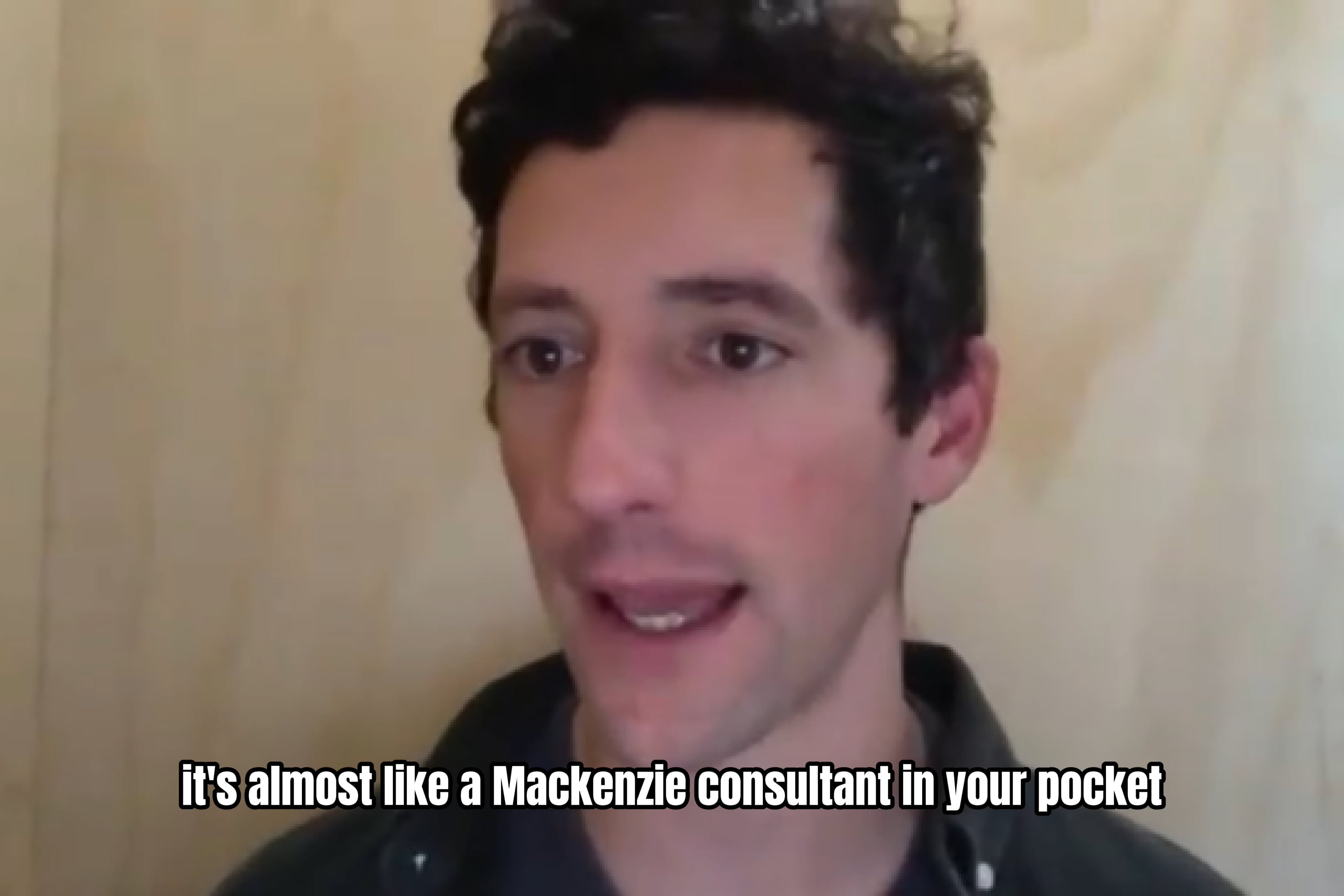
Coming up
.png)
Org Design for AI: Teams that Hum

Tools & Tempo: AI that Actually Fits Your Workflow
.png)
Consultant in a Box: Ship Strategy in Seconds
.png)
Customer & Insight Ops: Know More, Guess Less
.png)
Brand Intelligence: Turn Ideas into Assets
.png)
Copywriting with AI: Write emails, ads, & copy that convert fast
.png)
AI Foundations: Become Dangerous Fast
.png)
Making AI Make Sense
